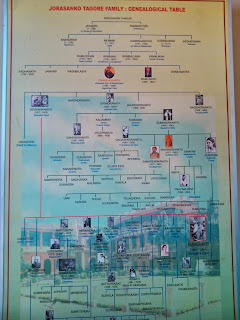Pandit Dwarkanath Vidyabhusan
Dwarkanath Vidyabhusan (Bengali: দ্বারকানাথ বিদ্যাভূষণ) (1820 – 22 August 1886) was an Indian scholar, editor and publisher of the trend-setting weekly Bengali newspaper Somprakash.
Vidyabhusan's father, Harachandra Bhattacharya (better known as Nyayratna) was a scholar. He had studied under Kashinath Tarkalankar, who had a popular traditional centre of education at Hatibagan in north Kolkata, Nyayratna taught in the traditional centres of Sanskrit-based education called tol-chatuspatis and also taught some boys in his spare time at his home.
Vidyabhusan's father, Harachandra Bhattacharya (better known as Nyayratna) was a scholar. He had studied under Kashinath Tarkalankar, who had a popular traditional centre of education at Hatibagan in north Kolkata, Nyayratna taught in the traditional centres of Sanskrit-based education called tol-chatuspatis and also taught some boys in his spare time at his home.
After initial education in the traditional centre of village education, the pathsala, Dwarkanath joined Sanskrit College, Kolkata in 1832, and studied there up to 1845, winning many prizes and earning fame as a scholar. He won the title of Vidyabhusan in his last examination. He had a short stint as a teacher in Fort William College and then joined Sanskrit College as a librarian. He later rose to the position of a professor and also assisted Ishwar Chandra Vidyasagar, when he was principal of the college.
A strong supporter of the women's education, Dwarkanath Vidyabhusan joined other liberals to support Bethune School (established by John Elliot Drinkwater Bethune) for twenty years.
In 1856, his father established a printing press.[1] It must be mentioned that it was an age when publishers concentrated on an incongruous double bill of religion and erotica but tastes had started changing. In 1857, forty-six Indian-owned printing presses put out 322 books for sale. Although religion still held sway, erotica had started ebbing out. However, his father fell ill and died shortly after establishing the printing press. Vidyabhusan inherited the press and published in Bengali two volumes on the history of Greece and history of Rome, he had written. That was possibly the first time that fat volumes of history written in easy flowing Bengali language was published and it immediately established Vidybhusan as a writer.
Iswar Chandra Vidyasagar proposed the publication of a weekly newspaper Somprakash partly with the objective of providing employment for a deaf scholar. The newspaper hit the stands in 1858 but the deaf scholar never joined it. The entire responsibility of editing and publishing the newspaper vested in Vidyabhusan. At that time, Bengali newspapers such as Sambad Prabhakar and Sambad Bhaskar were 'defiling the moral environment in Bengal'. With its dignified tastes, lucid language and fearless criticism, Somprakash occupied the top position in the field of Bengali newspapers.
Initially, Somprakash was published from a lane in Champatala in Kolkata. When the railway was extended to Canning in 1862, he shifted the printing press to his native village Chingripota (renamed as Subhashgram), now in South 24-Parganas.
He strongly criticised the powerful indigo planters and landlords. In his evidence before the Indigo Enquiry Committee, Rev. James Long emphatically stated, "These periodicals play a significant role as the mouthpiece of the Indian public." In 1878, when the viceroy, Lord Lytton, introduced the Vernacular Press Act, specially targeting the Bengali press, Vidyabhusan closed down Somprakash, rather than sign an undertaking about it, agreeing to follow the dictates of the authorities. Sir Richard Temple, lieutenant governor, called him to his house and requested him not to close down the newspaper. Later, when the Act was withdrawn, he resumed publication of Somprakas
He established an English school in his native place called Harinavi DVAS High School(Harinavi Dwarkanath Vidyabhusan Anglo Sanskrit High School) and bore the expenses of running the same. A man of high moral standards he stood by the down trodden in society. With advancing age, his health started faltering. He published a monthly magazine Kalpadrum for sometime. Once he went and stayed in Varanasi for sometime and was shocked by the wretched state of affairs of religion and morals. He died at Satna where he had gone to recoup his health.
Sivanath Sastri was his sister's son
Works
History: History of Greece, History of Rome (both in Bengali). Text books: Nitisar, Pathamrita, Chhatrabodh, Bhusansar Byakaran. Poetry: Prakrito Prem, Prokrito Sukh, Biseswar Bilap.



Comments